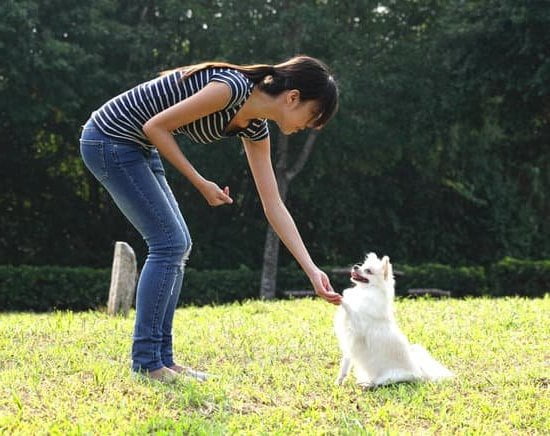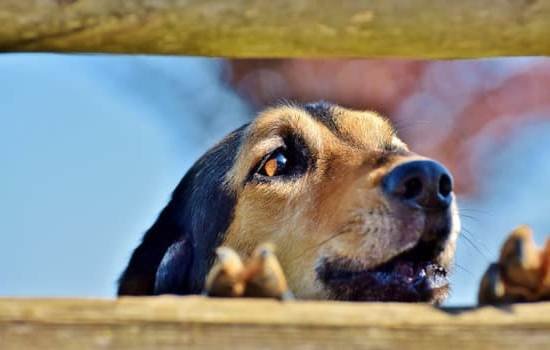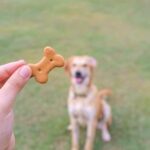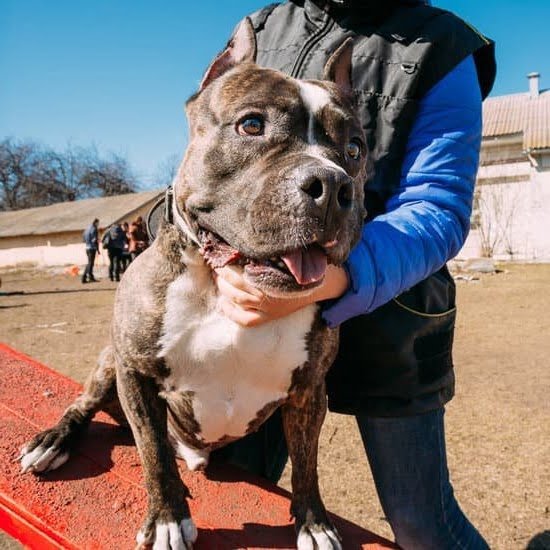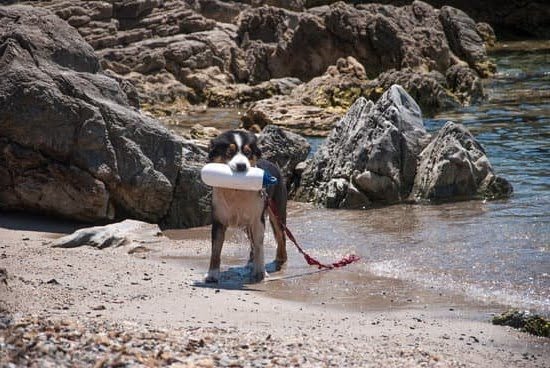Potty training a dog is often associated with the early stages of their life, but what about when you have an adult dog that still hasn’t quite mastered the art of relieving themselves in the appropriate place? Whether you’ve recently adopted an adult dog or have been struggling to break old habits, potty training can be a frustrating process. However, with patience and persistence, it is possible to successfully teach your adult dog where and when to go.
Training an adult dog brings its own set of challenges compared to a puppy. The reasons behind your dog’s potty training issues can vary greatly, from improper training during their youth to physical or medical conditions that make it difficult for them to control their bladder. Understanding these challenges is crucial in order to tailor your approach and find the most effective methods for potty training your adult dog.
A consistent routine plays a key role in successfully potty training any dog, regardless of age. Establishing set times for bathroom breaks can help your adult dog understand when it is appropriate to go outside. Additionally, creating structure around their feeding times will regulate their bathroom habits as they become accustomed to expecting a bathroom break shortly after meals. With patience and dedication to this routine, you can help your adult dog develop good bathroom habits in no time.
While potty training an adult dog may require some extra effort and understanding, it is important to remember that accidents will happen along the way. It’s how you handle those accidents that make all the difference. Avoid using negative reinforcement techniques such as scolding or punishment as this can confuse and distress your adult dog.
Instead, focus on positive reinforcement by praising and rewarding them for going outside. This will create a positive association with proper bathroom behavior and encourage them to continue doing so.
In this article, we will explore various strategies and techniques for successfully potty training your adult dog. From finding the perfect spot outdoors to employing positive reinforcement techniques for motivation, we will cover all the essential steps in detail. So, if you’re looking to end the frustration of potty accidents and establish good bathroom habits for your adult dog, continue reading for expert tips and advice.
Assessing the reasons behind your adult dog’s potty training issues
One of the first steps in successfully potty training an adult dog is to assess the reasons behind their potty training issues. Understanding why your dog is having trouble can help you tailor your training approach and address any underlying problems.
There are several potential reasons why a fully grown dog may struggle with potty training. One common cause is inconsistent or inadequate previous training. If your dog has not received proper potty training in the past, it may be more difficult for them to understand what is expected of them now.
Medical issues can also contribute to potty training difficulties in adult dogs. Urinary tract infections, bladder stones, and other health conditions can make it difficult for a dog to control their bladder or bowels. If you suspect that a medical issue could be causing your dog’s accidents, it’s important to consult a veterinarian to rule out any underlying health problems.
Stress and anxiety can also play a role in a dog’s potty training issues. Major life changes such as moving to a new home, the addition of another pet or family member, or even changes in routine can cause stress that affects your dog’s ability to properly potty train. Identifying any potential sources of stress and working to alleviate them can greatly improve your dog’s success in their potty training journey.
To better assess the reasons behind your adult dog’s potty training issues, consider keeping a log of their accidents. Note down the time, location, and any possible triggers or patterns that you observe. This information can provide valuable insights into what may be causing the problem and help guide your approach moving forward.
| Reasons Behind Adult Dog’s Potty Training Issues | Possible Solutions |
|---|---|
| Inconsistent or inadequate previous training | Start from scratch with basic potty training techniques and establish a consistent routine. |
| Medical issues | Consult a veterinarian to rule out any underlying health problems and seek appropriate treatment. |
| Stress and anxiety | Identify sources of stress and work to alleviate them; create a calm and positive environment for your dog during potty training. |
Establishing a consistent routine for your adult dog’s potty training
Establishing a consistent routine is crucial when potty training an adult dog. Dogs thrive on routine and structure, so by establishing a regular schedule, you will help your dog understand when and where they should eliminate. Here are some important steps to follow in order to establish a consistent routine for your adult dog’s potty training:
Set a Feeding Schedule
One of the first steps in establishing a routine is to set a consistent feeding schedule for your adult dog. This means feeding them at the same time every day, preferably twice a day. By having regular meal times, you can predict when your dog will need to eliminate.
Observe Your Dog’s Bathroom Habits
Pay close attention to your dog’s behavior after meals, water intake, and physical activity. Most dogs tend to eliminate shortly after these activities, so it’s important to take them outside during those times. Look for signs such as sniffing around or circling that indicate your dog needs to go.
Take Your Dog Outside Regularly
In addition to timing their bathroom breaks around meals and activities, you should also establish a regular schedule of taking your dog outside throughout the day. This could include first thing in the morning, before bedtime, and every few hours in between.
Use Cue Words
As part of establishing a routine, it’s helpful to use cue words or phrases that signal to your adult dog that it’s time to eliminate. Choose simple words like “Go potty” or “Do your business” and repeat them consistently while your dog is going about their bathroom routine outside.
By following these steps and establishing a consistent routine for your adult dog’s potty training, you are providing them with guidance and structure that will make the process easier for both of you. Remember that consistency is key, so try to stick to the schedule as closely as possible. With time and patience, your dog will begin to understand what is expected of them and where they should potty.
Finding the perfect potty spot for your adult dog
Understanding the importance of a designated potty spot
When it comes to potty training your adult dog, one of the key factors for success is finding the perfect potty spot for them. Having a designated spot where your dog can consistently go to relieve themselves will help to reinforce good habits and make the training process more efficient. A specific potty spot will also help to minimize confusion for your dog and reduce accidents inside the house.
Choosing an appropriate outdoor area
When selecting a potty spot for your adult dog, it’s important to choose an appropriate outdoor area that is easily accessible and safe. Look for an area in your yard or close by that is easily reachable for both you and your dog. It should be free from any potential hazards such as toxins, sharp objects, or busy roads.
Additionally, consider the surface of the area. Dogs may have preferences when it comes to texture or substrate they prefer to eliminate on, such as grass, gravel, concrete, or sand. Observe your dog’s behavior during walks or previous trips outside to see if they display any particular preferences.
The importance of consistency
Consistency is key in potty training, and this applies to choosing a potty spot as well. Once you have found an appropriate outdoor area for your adult dog, make sure to consistently direct them there every time they need to go. Use verbal cues such as “go potty” or “do your business” to help associate these words with the desired behavior.
Avoid changing the designated potty spot frequently as this can confuse your dog and disrupt their progress. Consistency will reinforce their understanding of where they should go and establish a reliable routine. Additionally, be patient with your furry friend as it may take some time for them to fully understand and adapt to the chosen potty spot.
Employing positive reinforcement techniques to encourage your adult dog to potty outside
When it comes to potty training an adult dog, employing positive reinforcement techniques is crucial in encouraging them to use the bathroom outside. Positive reinforcement involves rewarding your dog for exhibiting desired behavior, in this case, eliminating waste outside. This method not only helps motivate your dog but also strengthens the bond between you and your furry friend.
One effective technique to employ is using treats as rewards. For example, every time your adult dog successfully goes potty outside, praise them enthusiastically and immediately give them a small treat. By associating going potty outside with receiving treats and praise, your dog will be more inclined to repeat the behavior.
Consistency is key when implementing positive reinforcement techniques. Take your adult dog out to their designated potty spot at regular intervals throughout the day, especially after meals or naps. Be patient and wait for them to eliminate waste before giving them praise and a treat.
It’s important to remember that accidents may happen during this process, so try not to scold or punish your dog. Negative reinforcement can lead to confusion and anxiety, making the potty training process more challenging.
To track progress and identify patterns in your adult dog’s elimination habits, keep a log of their bathroom schedule and note any accidents that occur inside. This will help you establish a routine that aligns with their natural urges. Additionally, pay attention to any specific cues or behaviors they display when they need to go potty, such as sniffing around or circling an area.
Using positive reinforcement techniques not only encourages good behavior but also helps create a positive association with going potty outside for your adult dog. With time and consistency, they will learn that eliminating waste outside is the desired behavior and will continue doing so without needing constant rewards or reminders.
Employing Positive Reinforcement Techniques
| Positive Reinforcement Technique | Description |
|---|---|
| Treats and praise | Rewarding your adult dog with treats and enthusiastic praise immediately after they eliminate waste outside. This association motivates them to repeat the behavior. |
| Consistency | Taking your adult dog out to their designated potty spot at regular intervals, especially after meals or naps. Waiting for them to eliminate waste before giving treats and praise. |
| No punishment | Avoiding scolding or punishment for accidents that happen during the potty training process as negative reinforcement can lead to confusion and anxiety. |
| Bathroom schedule log | Keeping a log of your adult dog’s bathroom schedule and noting any accidents that occur inside. This helps establish a routine that aligns with their natural urges. |
Dealing with accidents
Accidents are an inevitable part of the potty training process, especially when it comes to training an adult dog who may have developed bad habits over time. It’s important to approach accidents in a calm and positive manner to prevent negative reinforcement and setbacks in the training progress. Here are some tips on how to effectively clean up accidents and avoid negative reinforcement:
- React calmly: When you discover an accident, it’s crucial not to punish or scold your dog. Getting angry or showing frustration can create a negative association with the act of eliminating, which may lead to fear or anxiety. Instead, take a deep breath and remind yourself that accidents happen during the learning process.
- Clean up promptly: To discourage repeat accidents, it’s essential to clean up any messes thoroughly and promptly. Use an enzymatic cleaner specifically designed for pet stains and odors. Regular household cleaners might not fully eliminate the scent, which can attract your dog back to the same spot.
- Create a designated elimination area: In addition to cleaning up accidents inside your home, it’s equally important to establish a specific outdoor spot for your adult dog to potty. This designated area will help reinforce where they should go while minimizing confusion. Using positive verbal cues like “go potty” or “do your business” when they are eliminating outside can also be beneficial in associating the command with the action.
- Supervise and manage access: Until your adult dog is fully potty trained, it’s vital to supervise them closely and limit their access throughout the house when you cannot watch them directly. This will reduce the chances of accidents occurring while allowing you to catch any signs that they need to eliminate.
- Stay consistent with routine: Consistency is key in preventing accidents during the potty training process. Ensure that you maintain a regular schedule for feeding, exercise, bathroom breaks, and bedtime. By sticking to a routine, your dog will have a clearer understanding of when and where they should go.
By approaching accidents with patience and understanding, you can effectively clean up after your adult dog and avoid negative reinforcement. Consistency, positive reinforcement techniques, and creating a designated elimination area will help your dog grasp the concept of potty training more quickly. Remember that accidents are a natural part of the learning process, so staying motivated and persisting with the training will ultimately lead to success in potty training your adult dog.
Patience and persistence
Patience and persistence are key when it comes to potty training an adult dog. It is important to remember that every dog is different and may require more time and effort to fully grasp the concept of potty training. During this process, it is essential for dog owners to stay motivated and maintain a positive mindset.
Firstly, setting realistic expectations can help with staying motivated. Potty training is a learning process for both the dog and the owner, so it’s important not to get discouraged by setbacks or accidents. Understanding that accidents happen and progress takes time will prevent frustration from taking over. Remember that each successful potty break outside is a step in the right direction.
To stay motivated, consistency is key. Creating a strict routine will help your adult dog understand when and where they should go potty. Set specific times for taking them outside, such as first thing in the morning, after meals, after naps, and before bedtime. Reinforce this routine consistently every day until it becomes a habit for both you and your dog.
Positive reinforcement techniques can also be highly motivating for both dogs and owners during the potty training process. Lavish your adult dog with praise, treats, or even playtime whenever they successfully go to the bathroom outside. This positive association will encourage them to repeat this behavior in order to receive rewards.
Additionally, keeping track of your dog’s progress can boost motivation levels during potty training. Establishing a record-keeping system can help you see patterns, identify potential problem areas, or make adjustments to your routine if necessary. Seeing improvements over time can provide reassurance that your efforts are paying off.
Seeking professional help
Potty training an adult dog can be challenging, especially if they have developed ingrained habits or behavioral issues. While many owners may choose to tackle the potty training process on their own, there are certain situations where seeking professional help from a dog trainer or behaviorist is recommended.
One instance where it is advisable to consult a professional is when your adult dog’s potty training issues stem from underlying behavioral problems. For example, if your dog exhibits signs of anxiety, fearfulness, or aggression during the potty training process, it may be necessary to work with a trainer or behaviorist who specializes in addressing these specific issues.
These professionals can provide guidance and implement targeted techniques to address your dog’s underlying behavioral problems and support their progress in potty training.
Another situation where professional help may be beneficial is when you have tried various methods and strategies without success. Some dogs may require specialized approaches that go beyond what you can find online or in books. A qualified dog trainer or behaviorist can assess your adult dog’s individual needs and develop a customized training plan specifically tailored to address their potty training challenges.
Additionally, seeking professional assistance can provide peace of mind for owners who lack experience in potty training adult dogs. Trainers and behaviorists have extensive knowledge and expertise in understanding canine behavior and finding effective solutions for various training dilemmas. They can guide you through the process, offer valuable advice, and ensure that you are using the most appropriate techniques for your individual situation.
When deciding whether to consult a professional for potty training assistance, consider the severity of your adult dog’s issues, the time and effort you are willing to invest, and your level of experience with dog training. It is important to remember that seeking professional help does not indicate failure as an owner but rather a commitment to providing the best care for your furry companion.
Celebrating success
Rewarding and praising your adult dog’s progress during the potty training process is an essential part of reinforcing positive behavior. By celebrating success, you can encourage your dog to continue making progress and strengthen the bond between you and your furry friend. Here are some tips for effectively rewarding and praising your adult dog’s potty training achievements.
Firstly, it is important to choose rewards that are highly motivating for your adult dog. Different dogs have different preferences, so it is crucial to find out what your dog finds most rewarding. This could be their favorite treat, a special toy, or even verbal praise and petting. Use these rewards immediately after your dog successfully eliminates outside to associate the action with positive reinforcement.
Additionally, timing is key when it comes to rewarding your adult dog’s progress. Dogs have short attention spans, so make sure to praise and reward them immediately after they eliminate in the appropriate spot. This reinforces the connection between going potty outside and receiving a reward, helping them understand what behavior is expected of them.
In addition to tangible rewards, verbal praise plays an important role in celebrating success during potty training. Dogs thrive on positive feedback from their owners, so use an enthusiastic tone of voice when praising them for going potty in the right place. Be consistent with your praise every time they accomplish this milestone to reinforce the desired behavior.
Remember that punishing or scolding your adult dog for accidents will only confuse and deter them from learning proper potty training habits. Instead of focusing on negative reinforcement when accidents happen, redirect their attention to the appropriate potty spot and reward them when they eliminate there successfully.
By consistently rewarding and praising your adult dog’s progress during this process, you will not only motivate them but also build a strong foundation of trust and communication. Keep in mind that each dog learns at their own pace, so be patient and persistent throughout the training journey until they become fully potty trained.
Conclusion
Potty training an adult dog may come with its challenges, but the benefits and joys that come with a successfully trained dog make all the effort worthwhile. By understanding the reasons behind your dog’s potty training issues and implementing a consistent routine, you can help your furry friend learn where to properly relieve themselves. Finding the perfect potty spot for your dog and using positive reinforcement techniques will also play important roles in their training.
Accidents are bound to happen during the process, but it’s crucial to handle them calmly and without negative reinforcement. By cleaning up accidents promptly and avoiding punishment, you create a safe environment for your dog to continue learning. Throughout this journey, patience and persistence are key. Potty training takes time, so it’s important to stay motivated and committed as you work through any setbacks.
In some cases, professional help from a dog trainer or behaviorist may be necessary. They can provide expert guidance tailored specifically to your dog’s needs, helping to address any challenges that may arise during the training process. Don’t hesitate to reach out for assistance if needed.
Finally, don’t forget to celebrate small victories along the way. Rewarding and praising your adult dog’s progress is essential for building their confidence and reinforcing positive behaviors. With consistency and dedication, you’ll soon have a fully potty trained adult dog who understands where they should relieve themselves.
The joys of having a successfully potty trained adult dog extend far beyond just cleanliness in your home; it fosters a stronger bond between you and your furry companion. It allows them more freedom in different environments since they understand appropriate bathroom behavior wherever they go. A well-trained adult dog brings peace of mind when guests visit or when you’re out on adventures together.
So stay committed, be patient, seek help when needed, and celebrate every milestone reached. The rewards of a successfully potty trained adult dog are truly worth it in the end.
Frequently Asked Questions
Can you potty train a full grown dog?
Potty training a full-grown dog can be challenging, but it is definitely possible with consistency and patience. The process might take longer compared to training a young puppy, as the dog’s habits are already established. It is important to identify any underlying medical issues that could be causing accidents and address them accordingly.
Establishing a consistent routine with regular potty breaks, positive reinforcement, and supervision will play a crucial role in successfully potty training an adult dog. Consistency and positive reinforcement are key principles that should guide the training process.
What is the best way to potty train an older dog?
The best way to potty train an older dog revolves around understanding their individual needs and tailoring the training method accordingly. Start by establishing a consistent routine with specific times for bathroom breaks during the day. It is recommended to use crate training or confinement in a small area when the dog cannot be supervised to prevent accidents indoors.
Use positive reinforcement techniques such as treats, praise, or rewards whenever the older dog eliminates outside. Patience and consistency are vital throughout the process, as it may take some time for the older dog to unlearn previous habits and develop new ones.
What age is too late to potty train a dog?
There isn’t necessarily an age that is “too late” to potty train a dog; however, it does become more challenging as they get older due to ingrained habits and potential health issues. While it may take longer for an older dog to learn new habits, with patience and consistency, they can still be trained successfully.
However, if there are underlying medical issues affecting their ability to control their bladder or bowel movements, it becomes essential to address these concerns first in consultation with a veterinarian. In such cases, professional guidance from an experienced dog trainer may also prove beneficial in overcoming any obstacles during the potty training process for an older dog.

Welcome to the blog! I am a professional dog trainer and have been working with dogs for many years. In this blog, I will be discussing various topics related to dog training, including tips, tricks, and advice. I hope you find this information helpful and informative. Thanks for reading!

